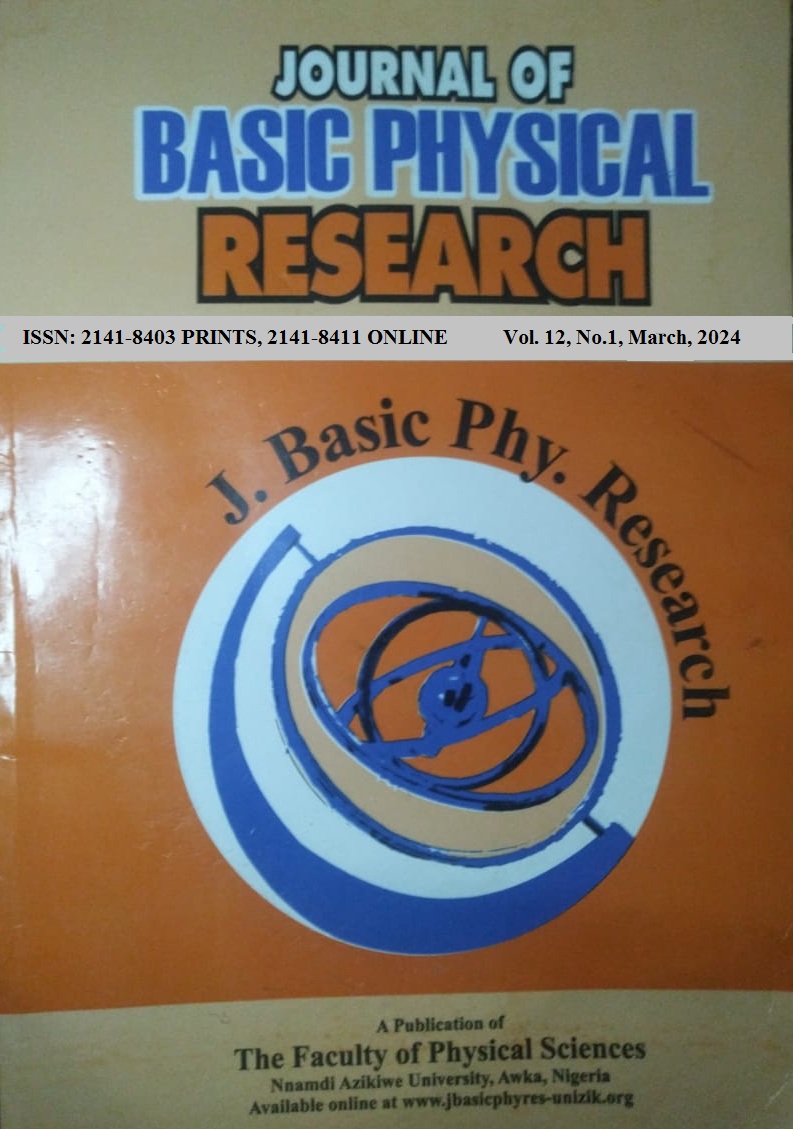AMELIORATIVE EFFECTS OF ROOT BARK EXTRACTS OF FERETIA APODANTHERA ON REPRODUCTIVE PARAMETERS IN STREPTOZOTOCIN INDUCED DIABETIC MALE WISTAR ALBINO RATS
Keywords:
Antioxidants, sperm, roots, lipids, & testosteroneAbstract
Diabetes mellitus is a chronic illness that is relatively prevalent. Employing routine procedures, the reproductive parameters of Feretia apodanthera root bark extracts in male wistar albino rats induced with streptozotocin (STZ) were examined. The root bark of the plant was air-dried and subjected to Soxhlet extraction. The invitro antioxidant potential of the extract was investigated using DPPH(1,1-diphenyl-2-picrylhydrazyl) radical scavenging activity. While lipid profiles, sperm parameters and histopathology were conducted using standard procedures. Diabetes induction of male wistar albino rats was carried out with 50 mg intravenous streptozotocin injection. Seven groups were randomly assigned to the rats (A, B, C, D, E, F and G).Group A (normal control) received 1 ml of distilled water (vehicle), B (Diabetic induced untreated), groups C and D were supplemented with 100 and 200mg/kg body weight (b.w) aqueous extract, while group E and F were administered 100 and 200mg/kg body weight ethanol extract, and group G received a combined dosage of 5mg/kg b.w sildenafil citrate + 100mg Metformin. The percentage yield obtained following extraction was found to be 5.91%, 5.52% and 2.14% (w/w) for n-hexane, aqueous and ethanol root bark extracts of Feretia apodanthera respectively. DPPH radical scavenging activity reveals that aqueous extract has a higher antioxidant potential than ethanol and n-hexane extract. Diabetic rats treated with aqueous and ethanol extracts shows significant(p<0.05) improvement of body weight compared to the untreated groups. Total cholesterol, triglycerides and low-density lipoprotein cholesterol were significantly(p<0.05) lower in aqueous extracts (200mg/kg b.w) while high density lipoprotein cholesterol was significantly (p<0.05) higher compared to the diabetic control group. Likewise, diabetic rats treated with 200mg/kg b.w of aqueous shows significant(p<0.05) and preferable healthy risk atherogenicpredictors, while groups treated with ethanol extract shows no significant(p<0.05) difference in all the predictor indices compared with STZ induced untreated group. The level of testosterone and sperm parameters were significantly(p<0.05) improved in aqueous extract treated group while histopathology of the testes reveals a better appearance of the spermatogenic cells andseminiferous membranes in aqueous extract treated group which is synonymous to the normal control. The result implies that root bark aqueous extract of Feretia apodanthera, particularly-200mg/kg b.w had significant potential in ameliorating sexual impairment in diabetic male rats.


